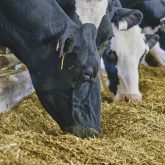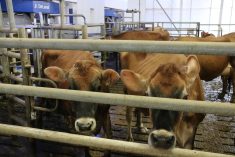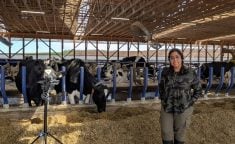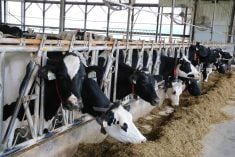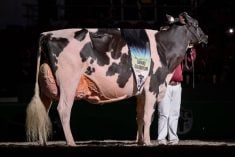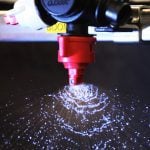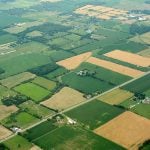Dairy Farmers of Canada President David Wiens said a unified dairy sector approach will be important as new American President Donald Trump calls for renegotiating the Canada-United States-Mexico Agreement (CUSMA) that governs trade in North America.
Wiens said at the Dairy Farmers of Ontario annual meeting that many industries are concerned about the potential impact of Trump’s presidency.
“We have no control over these events, but what we can control is our response,” he says.
Read Also
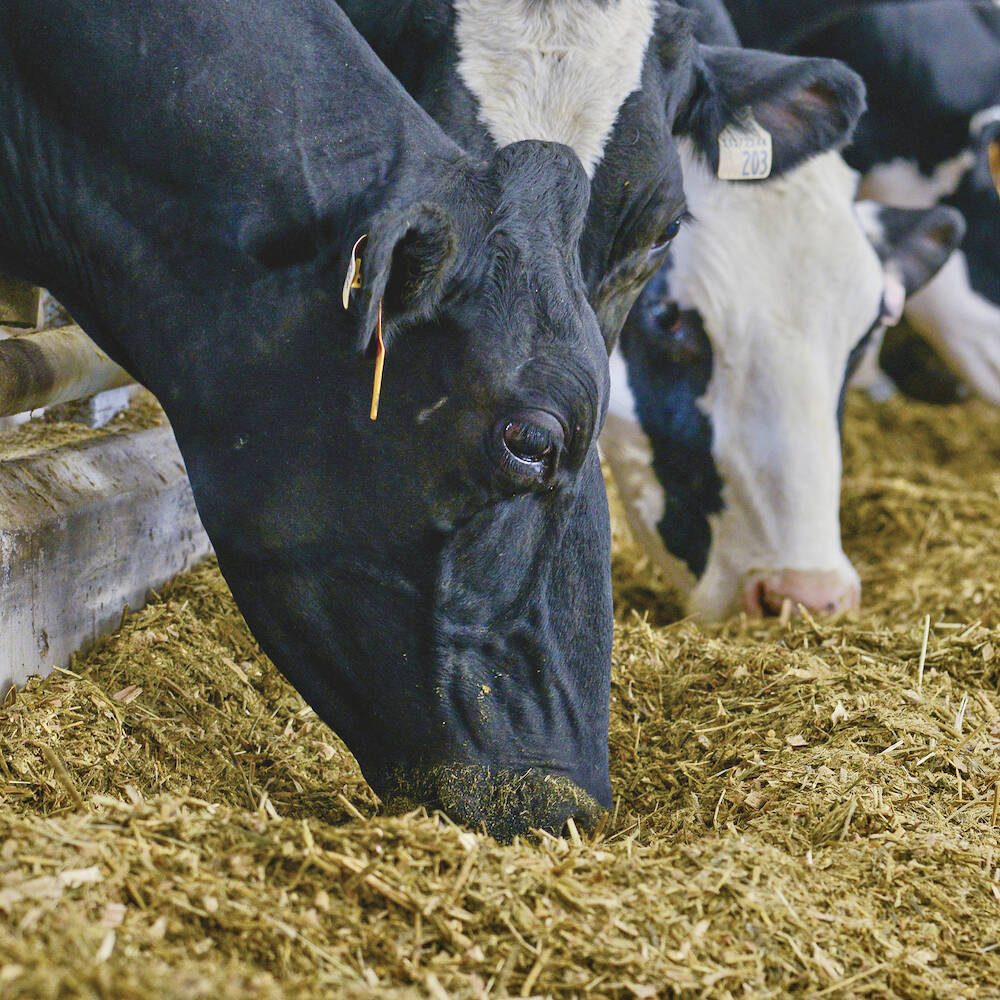
Byproducts with benefits for dairy cows
Local food processors can be a source of financially advantageous byproducts for dairy cows, but make sure the ration is properly balanced.
“By advocating together we will be best positioned to influence outcomes.”
Canada maintained the supply-management system during the last round of CUSMA negotiations, but again gave up market share to imports.
Canadian dairy farmers supply about 80 per cent of the domestic market. The rest is supplied by imports, according to the Canadian Dairy Commission.
Canada will be facing a Trump with a stronger mandate who has learned lessons from his first four years as president, says Andrea van Vugt, chief operating officer of Wellington Advocacy, a lobby organization.
She told the DFO annual meeting that a Trump presidency will be more focused on accomplishing its goals.
“One of the things that he’s learned is how fast four years goes, and he’s learned some very interesting things about how to arrange his cabinet and how to arrange his policy so that he has an efficient, effective, surgical, approach to the issues he cares about,” she said.
Hamel re-elected chair of DFC
Mark Hamel was re-elected as the chair of the Dairy Farmers of Ontario board at a special board meeting after the organization’s annual meeting in Toronto Jan. 16.
The Bruce County dairy farmer who represents Region 11 was first elected last year and has been a board member since 2018.
John Wynands is the new vice-chair of the board. He represents Region 3. Don Gordon, board member for Region 5, was re-elected as the second vice-chair.
The Dairy Farmers of Ontario celebrated the start of its 60th anniversary year at the annual meeting, which was attended by hundreds of dairy farmers and connected industry.
Hamel said his highlight from 2024 includes national direction on encouraging processing growth.
“From the producer perspective, it’s coming together with the processors on the national growth plan, getting the funding from the federal government, making sure that they’re going to have progressive investment and a strategy for processing capacity,” he said.
National pooling closer
The Canadian dairy industry continues to inch towards an agreement in which the 10 provincial dairy boards will collaborate in many areas.
The P10, as the group is called, agreed on a market growth initiative in December, the first concrete part of what is expected to eventually include revenue sharing, quota policy harmonization and sharing transportation expenses across the country.
Benoit Basillais, chief executive officer of the Canadian Dairy Commission, said that he hopes that the rest of the implementation of a P10 milk pool will be completed within the next couple of years.
The negotiation to create a P10 milk pool has been going on for years.
The national pooling of milk and programs will mean the ability to better coordinate how milk is distributed, especially to new processing plants.
“The market is becoming national,” says Basillais.
“We’re not going to build 10 plants. We need one plant with specific expertise in one region, and maybe another plant with specific knowledge of products in another region.”
With national revenue pooling, “no matter where the investment is, everybody benefits,” he says.
There’s increasing demand for speciality ingredients derived from milk, but Canadian processing hasn’t kept up.
The market growth program, agreed to in December, will underlie that new approach.
The Market Growth Program is the first major collaboration of the P10 and it has three streams: preproduction funding to study the potential of a processing investment, the excess capacity stream, which gives incentives for investment into processing that creates value for all milk components and the milk supply stream, which supports processing projects that generate butterfat growth.
The CDC says that the preproduction funding stream launched in December 2023 and six applications were received. “It means a lot to Ontario dairy farmers because we’re one of the largest provinces and a lot of the population is here,” says Hamel. The fact that benefits will be shared across the country means that all provinces and all regions will benefit, he said.
National coordination will mean opportunities to handle growth, innovation and new processing to handle the surplus in solids-not-fat, he says.
The five eastern Canadian milk boards have been coordinating for a decade as the P5 milk pool.




